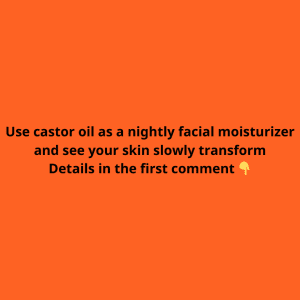Charley horses are those sudden, sharp muscle cramps that seem to strike out of nowhere, leaving you in discomfort or even pain. These cramps most commonly affect the calves, though they can occur in other muscles, too. While they’re typically harmless, recurring charley horses can interfere with daily activities and sleep. Let’s explore why charley horses happen, what they could mean for your health, and, most importantly, how to prevent and manage them effectively.
Understanding Charley Horses

A charley horse is simply a cramp, or spasm, caused by sudden, involuntary muscle contractions. They are most common in the legs, particularly in the calves, and can vary in intensity from a mild cramping to an intense, nearly immobilizing pain. Charley horses often strike during physical activity, but they can also creep up during rest or sleep, disrupting your relaxation or a good night’s sleep.
You’ll typically feel a charley horse as a sharp, tightening pain in the muscle, which might become hard or knotted. Most cramps last only a few seconds to a few minutes, but some can persist, leaving residual tenderness in the muscle afterward.
What Causes Charley Horses?
A wide range of factors can lead to muscle cramps, and understanding these can be the first step to reducing their frequency and impact.
- Dehydration: Muscles need proper hydration to function correctly. Dehydration affects the balance of key electrolytes like potassium, magnesium, and calcium—essential for muscle relaxation and contraction. Without enough fluids, muscles are more prone to spasms.
- Overuse or Overexertion: Physical activity that overuses specific muscles, such as running or cycling, can increase the risk of cramps, especially if you haven’t warmed up or stretched properly. Repeated motions, prolonged standing, or walking can trigger muscle fatigue, which may lead to cramps.
- Poor Circulation: Insufficient blood flow to the muscles can result in charley horses. This might be due to sitting for long periods or due to underlying circulatory issues, which prevent your muscles from receiving the oxygen and nutrients they need to function optimally.
- Nerve Compression: Conditions like sciatica or even improper posture can compress nerves, which may trigger muscle spasms. When nerves are pinched, they send signals to your muscles to contract, potentially leading to cramps.
- Medication Side Effects: Some medications, particularly diuretics, can deplete the body of essential minerals like potassium, calcium, and magnesium. Medications for high blood pressure or high cholesterol may also affect muscle health, increasing the likelihood of charley horses.
Symptoms of a Charley Horse
Charley horses typically present with:
- A sudden, sharp pain in the muscle
- A hard, knotted lump under the skin
- Muscle soreness lasting for hours or even days after the cramp
- Temporary limitation in the affected muscle’s movement or flexibility
While charley horses are rarely dangerous, frequent or prolonged episodes may warrant closer attention to rule out any underlying issues.
How to Prevent Charley Horses
Preventing charley horses starts with addressing the root causes. Here are some effective strategies:
- Stay Hydrated: Drinking enough water each day helps maintain a balance of electrolytes and ensures muscle cells receive what they need to function. On days when you’re active, especially in the heat, increase your fluid intake.
- Stretch Regularly: Gentle stretching before and after physical activity helps keep muscles flexible and less prone to cramps. Focus on the calves, hamstrings, and other areas where you commonly experience charley horses.
- Eat a Balanced Diet: Eating foods rich in potassium, calcium, and magnesium can help maintain muscle health. Bananas, oranges, leafy greens, nuts, and seeds are excellent sources of these nutrients, which are critical for muscle function.
- Wear Supportive Footwear: Poorly fitting shoes can impact your muscle alignment and circulation. Choose footwear with proper arch support, especially if you spend a lot of time on your feet.
- Avoid Overexertion: Gradually build up the intensity of your exercise regimen. Avoid going from zero to 60 without conditioning your muscles, which could lead to muscle fatigue and cramping.
What to Do When a Charley Horse Strikes

When you feel a charley horse coming on, immediate action can help alleviate the pain and speed up recovery. Here are some quick treatments to try:
- Gently Stretch the Muscle: Stretching can help relieve tension. For a calf cramp, for example, try flexing your foot toward your knee or gently stretching your leg while keeping the toes pointed up.
- Massage the Area: Use your hands to massage the cramped muscle, applying gentle pressure to relieve tightness. Massage can also promote circulation, which aids in recovery.
- Apply Heat or Cold: Heat helps relax muscles, while cold can reduce pain and inflammation. Apply a warm towel, heating pad, or a cold pack to the affected area for relief.
- Stay Hydrated: Drink a glass of water or an electrolyte-rich beverage to replenish any lost fluids and minerals. This is especially important if you suspect dehydration might be the cause of the cramp.
How Diet Affects Charley Horses
Diet plays a significant role in managing and preventing muscle cramps. Certain foods provide essential nutrients that support healthy muscle function:
- Potassium: Found in bananas, oranges, potatoes, and spinach, potassium is vital for muscle contraction. Low potassium levels can lead to muscle weakness and cramps.
- Magnesium: This mineral is present in foods like nuts, seeds, and leafy greens. Magnesium supports muscle relaxation, making it crucial for preventing charley horses.
- Calcium: Dairy products, fortified plant milks, and leafy greens provide calcium, which works alongside other electrolytes to support muscle function. A lack of calcium can lead to spasms.

Consuming a diet rich in these nutrients, along with sufficient water intake, can help keep your muscles healthy and reduce the frequency of charley horses.
When to Seek Medical Advice
Charley horses are usually harmless, but there are times when it’s best to seek medical help. Consult a healthcare provider if:
- Cramps become frequent or severe
- They interfere with your sleep or daily activities
- You experience additional symptoms, like swelling, redness, or tenderness
- Cramps are accompanied by other health issues, such as fatigue or numbness

Frequent cramps could be a sign of underlying health issues, such as poor circulation, nerve disorders, or even electrolyte imbalances that require targeted treatment.
Conclusion
Charley horses can be a minor inconvenience or a major disruption, depending on their frequency and intensity. While they’re often a result of dehydration, overexertion, or nutrient deficiencies, they can also signal underlying health conditions. Prevention is the best approach, so prioritize hydration, eat a nutrient-rich diet, and remember to stretch regularly. If you do experience a charley horse, simple measures like stretching, massaging, and applying heat or cold can offer quick relief. And when in doubt, don’t hesitate to seek medical advice to ensure your muscle health is in check.


